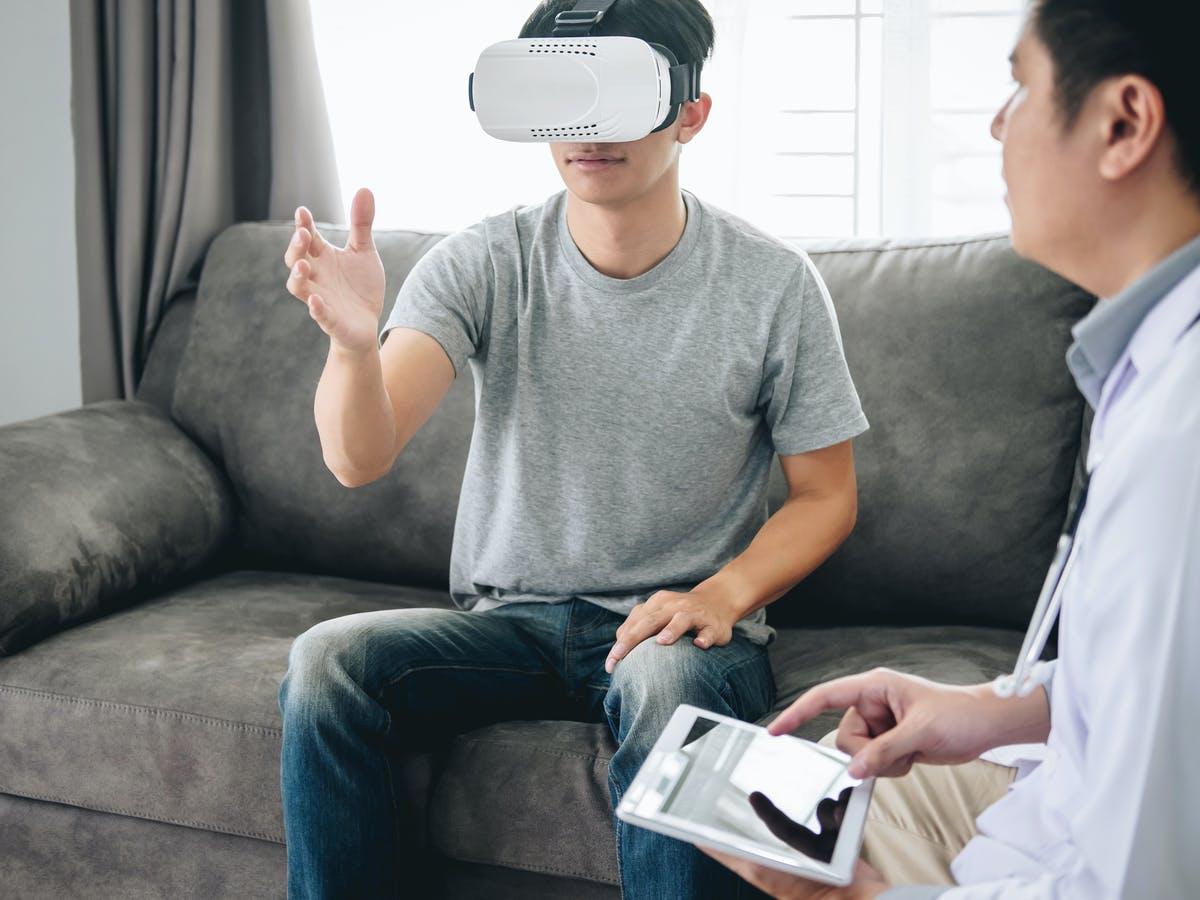All About Woebot
-By Sania Patel

Those who face adverse mental health often seek mental health care. Mental health care involves the services devoted to the treatment of mental illnesses and the improvement of mental health in people with mental disorders or problems. The COVID-19 Pandemic has raised reports of mental illnesses to an all-time high, especially in the United States. With the ever-increasing demand, mental health care services are proving their importance. According to the National Institute of Mental Health, in 2020, among the 14.2 million adults with mental health illnesses, 9.1 million (64.5 percent) received mental health treatment. The NIH also reports around 57.6 percent of young adults, ages 18 through 25 years, and 63 percent of adults, ages 26 through 49 years, received mental health care treatment in the past year.
As mental health care advances in prominence, its technology is forced to develop as well. Currently, mental health care services act as hindrances to their patients, for many reasons. Those who are suffering from a mental illness may shy away from treatment due to the expense, accessibility, commitment, and lack of trust. Relating to the data given by NIH, the majority of the patients are adults, around ages 18 through 49. If a patient is a young adult, expense acts as the main issue - many young adults are focused on dealing with student debt or schooling costs, as well as, future investments and expenses. If the patient is older, middle-aged to 49, they may have issues with commitment and accessibility. Adults are often busy taking care of their children and participating in full-time job - this makes it difficult for an individual to make time and focus on themselves.
Nevertheless, mental health care is an extremely powerful tool to fight mental illnesses and is looking to technology to solve its problems, specifically, virtual reality. Virtual reality describes an artificial environment that is experienced through sensory stimuli provided by a computer and in which an individual’s actions partially determine what happens in the environment. Virtual reality is often in the form of a goggle headset, providing an interactive, three-dimensional experience.
Virtual reality has many applications in mental health care services, however, it would be most effective at dealing with counseling and cognitive behavior therapy. One scenario in which VR can be used is through the treatment of addictions. Using VR, a counselor can receive data that accurately records a patient’s behavior and reaction towards specific substances. The information can be further used for the analysis of the root cause of the addiction, and it can be used to curate a specific therapy plan. VR is not only limited to addictions, as it has been proven to effectively treat acrophobia, panic disorder, binge eating disorders, body dysmorphia, agoraphobia, claustrophobia, trypanophobia, astraphobia, and social phobia.
Another way VR can be used is in cognitive rehabilitation. One study showed VR could be used to help autistic children and adults develop the skills necessary for independence. VR was used to teach patients how to pick up facial cues, how to cross the road, and how to identify different facial expressions.
The final way VR can be used in mental health care services is through the treatment of Post-Traumatic Stress Disorder (PTSD). VR technology can be used to expose the patient to the source of their disorder, allowing an individual to adapt to the stress and, more directly, face their fear. VR can increase or decrease the intensity of the fear, allowing patients to decrease their feelings of anxiety gradually. VR can use its technology to assess an individual’s symptoms, establish the symptom correlations, identify predictive variables, establish causal factors, identify differential predictors, and identify environmental predictors.
A study was conducted to measure the efficiency of VR when treating PTSD. The study found that, after six months of continuous VR treatment, PTSD symptoms dropped by 67 percent reduction from the original baseline set by the Clinician-Administered PTSD Scale. Indirectly, the study supported the idea that VR-based exposure therapy can also decrease the prevalence of several of phobias and mental disorders, such as anxiety, depression, and schizophrenia. Although the results seem promising, there are still several concerns regarding VR-based mental health treatment. First off, one major side effect is VR-induced sickness, which can involve dizziness, nausea, headache, eye strain, reduced limb control, reduced postural control, decreased sense of presence, and the development of responses inappropriate to the real world. Albeit slim, there is also a chance of developing seizures from over-exposure to VR technology.
Overall, VR has massive implications for the future. As mental health care services become increasingly popular, the need for technology in the field becomes more apparent. VR can lessen the restrictions placed on certain individuals, allowing all to receive treatment. By using VR, mental health care can become cheaper and easier to access. It can also allow for more accurate diagnosis and keep up with a patient’s commitment to their treatment plan. However, there are still great strides to be made in technology. VR must find a way to replace human interaction, as it is a key factor in healing mental disorders. The technology must also become advanced enough to minimize harmful side effects - specific plans must be curated to allow the usage of the technology without harming an individual’s brain or other senses. Virtual reality represents the future of mental health care.